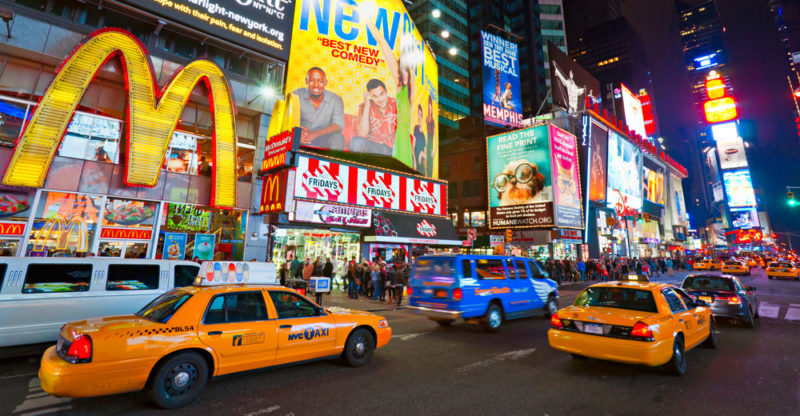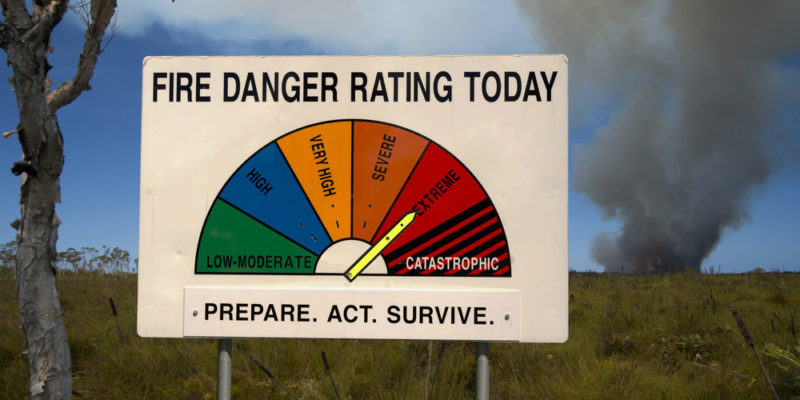We explain what a poster is, how it originated and the types that exist. Also, what are its characteristics, elements and some examples.
What are the posters?
 A poster is the physical support of some type of advertisement , message or artistic design. It generally consists of a sheet of paper , cardboard or some similar material , in which a visual and / or textual or typographic content is inscribed.
A poster is the physical support of some type of advertisement , message or artistic design. It generally consists of a sheet of paper , cardboard or some similar material , in which a visual and / or textual or typographic content is inscribed.The shapes and sizes of a poster, as well as the materials used to make it, can vary enormously , depending on its purpose and context of use. But in any case, it usually contains an attention-grabbing combination of text and images.
This is because it is one of humanity's oldest and most popular forms of mass communication , but it works on a very small scale. Its scope is limited to those who are physically in the vicinity.
Origin of the poster
 It is difficult to determine which was the first poster in history, but we do know that the cultures of classical antiquity used them to communicate royal laws and decrees to the population.
It is difficult to determine which was the first poster in history, but we do know that the cultures of classical antiquity used them to communicate royal laws and decrees to the population.They were usually written on the wall or carved on stone plates that were placed in visible places.
Two events revolutionized the idea of the poster in history:
- The invention of paper by the Chinese , since the sheets of this material were light, cheap and ideal for cutting into different sizes. In his case, they were written with brushes and black paint , given his particular writing and calligraphy.
- The invention of the printing press in 15th century Europe , which allowed the mechanization of the paper inking processes and thus manufacture not only books more quickly and massively, but also posters and other types of communications.
Poster functions
 Posters fulfill a primary function: to inform . In some cases they provide information for public use, such as precautions or directions. In other cases, the information may point to promoting products or it may be used as a protest mechanism.
Posters fulfill a primary function: to inform . In some cases they provide information for public use, such as precautions or directions. In other cases, the information may point to promoting products or it may be used as a protest mechanism.In all cases they are vehicles of a message . In other words, they always have the task of being read by someone and generating a reaction of some kind in that person .
Types of posters
 Posters can be classified, first of all, based on their informational purpose:
Posters can be classified, first of all, based on their informational purpose:
- Informative sign: These are those that comply with the transmission of an objective and punctual message , that is, they provide specific, determined information. For example: traffic signs, which indicate the remaining kilometers to a certain destination.
- Advertising posters: Those who have the task of influencing people's consumption patterns and disseminating certain products or services, that is, those that are part of advertising . For example: posters advertising a new brand of cleaner, on a billboard on the highway.
- Normative posters: This is the name given to those who seek to influence the behavior of the reader or viewer, to make it according to the regulations of the place or to make them aware of some type of law of conduct that governs it. For example: a poster in a library asking for silence in the reading room.
- Promotional posters: Those who aspire to disseminate some non-commercial content among their target audience, such as movie posters, posters for plays , fairs, events, or electoral posters when there is a political campaign, etc.
- Artistic or decorative posters: They are those that do not have a specific informative function, but are harmonious, beautiful or documentary, so their incorporation into an environment has more to do with an aesthetic consideration. For example: an advertising poster from the last century placed in a restaurant.
- Protest posters: Those that are made for the purpose of social or political unrest , such as those carried by the protesters in a rally, or those that some collectives and social groups adhere to the walls, often with satires and messages of discontent.
Elements that compose it
 The elements of any poster are usually of two types:
The elements of any poster are usually of two types:
- Textual: Written information, either in typographic letters or by hand, which can be later retrieved by viewers.
- Graphics: Images, photographs and other visual elements that accompany the message (or sometimes are the message).
Usual sizes
Posters can be virtually any size you want. However, there are more common standard print measurements, for example:
- A4: 19.7 x 21 cm posters.
- A3: 29.7 x 42 cm posters.
- A2: 42 x 59.4 cm posters.
- A1: 89.04 x 84.1 cm posters.
- B2: 59.4 x 84.0 cm posters.
- B1: 70 x 100 cm posters.
Parts of a poster
 Again, the posters can have any desired shapes, parts, and proportions. However, in more regulated areas, such as advertising, posters are often thought of based on:
Again, the posters can have any desired shapes, parts, and proportions. However, in more regulated areas, such as advertising, posters are often thought of based on:
- Header: Where the title of the poster goes, its main enunciation, its largest and most striking letters, although it is usually short in number of words.
- Body: The "middle" of the poster, if any, where the bulk of the information is condensed and there are usually allusive images.
- Footer: The "exit" or closure of the poster, generally smaller and more relevant, where additional details are included: the signature of the conveners, secondary conditions, addresses, contact details, etc.
Placing a poster
The usual criterion when placing posters aims at the greatest amount of exposure and visibility possible , especially if it is on public roads and other environments with a lot of traffic.On the other hand, there are often ordinances that regulate the matter. In some cases it is prohibited to place posters on the walls of certain institutions or locations (for example, because they are historical).
Other ordinances require their removal after a period of validity has expired (in the case of promotional and advertising, especially). The objective is to avoid visual contamination of the environment.
Digital posters
 The advent of digital technology and the cyber world has allowed the creation of digital posters. They are generally multimedia: they have more striking and innovative resources such as animation , sound or interactivity. They are used to attract the attention of your virtual viewers, being the most common form of online advertising .
The advent of digital technology and the cyber world has allowed the creation of digital posters. They are generally multimedia: they have more striking and innovative resources such as animation , sound or interactivity. They are used to attract the attention of your virtual viewers, being the most common form of online advertising .
How to make a good poster?
When generating a good poster, that is, one that is attended massively, various aspects must be taken into account , ranging from its composition to its placement.An overloaded, baroque or excessively aggressive poster generally generates rejection at sight. On the other hand, a drab, flat or faded sign will hardly attract the attention of a passerby.
Placement is also important to attract the eye. A lost poster among thousands goes unnoticed . It is also necessary to select where it is located, and avoid unpleasant contexts, for example, not stick it to a garbage container.
Examples of posters
- The posters with the upcoming films are advertised in cinemas , or plays that are based on a cultural complex.
- Notices of eviction from a property, or notices that prohibit smoking on an airplane.
- They are posters, paradoxically, the signs that prohibit fixing posters on the walls of a colonial church in the center of the city .
She has pursued her studies in The United States, where she has graduated in Business and Economics and is currently finishing her Master studies in International Economics and Finance. Miss. Amputee is fluent in three languages: English, Spanish and Russian and has elementary knowledge of French and Italian. She love exploring how Collaborative Research Group can become the best tool to achieve the (necessary) educational change. .
Leave a reply
Your email address will not be published. Required fields are marked *Recent post

Sport: What Is It, Types, Risks, Features, Characteristics and Examples
September 23, 2021

Dogs: Emergence, Features, Characteristics, Feeding and Breeds
September 24, 2021

Story: Definition, Elements, Structure, Features and Characteristics
September 24, 2021

Essay: Definition, Structure, Features, Characteristics, How to Do It
September 24, 2021
